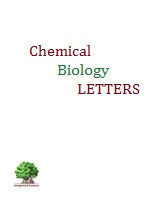Book : Organic Chemistry for Engineering Sciences
Author : Bhupender Singh
Edition : 1st Year of publication 2013
ISBN : 978-93-5126-559-7 Publisher: Integrated Science
To purchase this book, contact us through contactus page.
Table of Contents
An Introduction to
Organic Reactions
. Type of organic reactions
. Energy changes in Reactions
. Reaction Intermediates
Carbocations
Carbanions
Free Radicals
Carbenes
. Reaction Mechanisms
.. Substitution Reactions
Nucleophilic Substitution reactions
Electrophilic Substitution reactions
Free Radical Substitution reactions
.. Addition Reactions
Electrophilic Addition reactions
Nucleophilic Addition reactions
Free radical addition reactions
.. Elimination Reactions
.. Molecular Rearrangements
Nucleophilic rearrangements
Electrophilic rearrangements
Free radical rearrangement
. Oxidation and Reduction Reactions
Chemistry of Hydrocarbons
. Alkanes
Preparation
Physical Properties of Alkanes
Chemical Properties of Alkanes
Petroleum
Petroleum Origin
Natural Gas
Composition of Petroleum
Petroleum Mining
Petroleum Refining
Cracking
Reforming
Octane number
. CycloAlkanes
Nomenclature
Classification
Synthesis of Alicyclic Compounds
Physical Properties of cycloalkanes
Chemical Properties
Baeyer Strain Theory
MO theory or orbital picture of angle strain
Stability of Cyclohexane
Substitution reactions
Addition reaction
. Alkenes
Nomenclature
Preparation
Physical Properties
Chemical Properties
. Dienes
Conjugated Dienes
Preparation
Chemical Properties
. Alkynes
Acidity of Alkynes
Preparation
Physical Properties
Chemical Properties
. Aromatic Hydrocarbons
Nomenclature
Structure
Aromaticity
Chemical Reactions and Directive effect
Effect of substituent on Reactivity
Chemistry of Functional Groups
Hydrocarbon Halides
Synthesis
Physical Properties
Chemical Properties
Organometallic Reagents
Grignard Reagents
Preparation
Physical Properties
Chemical Properties
Organolithiums
Preparation
Properties
Polyalcohols (glycols) or polyhydric alcohols
Dihydric Alcohols (Diols)
Properties
Ethylene Glycol
Preparation
Physical Properties
Chemical Properties
Aldehydes and ketones
Structure of the Aldehyde and Ketones
Methods of Preparation
Physical Properties of Aldehyde
Chemical Properties of Aldehydes
Carboxylic acids
Preparation
Physical Properties
Chemical Properties
Acyl Chlorides
Preparation of Acid Chlorides
Physical Properties of Acid Chlorides
Chemical Properties of Acid Chlorides
Acid Anhydrides
Preparation of Acid Anhydrides
Physical properties
Chemical properties
Diazonium Salts
Preparation
Physical properties
Chemical properties
Synthetic use of diazonium salts
Pyridine
Structure
Synthesis
Properties
Chemical Reactions
Chromatography
. Introduction
Theory
Classification
. Thin Layer Chromatography (TLC)
Theory of TLC
Stationary phases
Mobile phases
Experimental: Analysis of a Mixture by Thin Layer
Chromatography
Application and Uses of TLC
. Column Chromatography
Experimental Procedure for Column Chromatography
. Wet Packing
. Dry Packing
Sample Loading
Elution
Development
Application and Uses of Column Chromatography
Normal to high pressure chromatography
NPLC, MPLC and HPLC
Normal Phase and Reverse Phase Chromatography
Liquid Chromatography types
High Performance Liquid Chromatography (HPLC)
Reverse phase HPLC
Instrumentation for HPLC
Solvents
Pump
Injector
Column
Detector
Applications of HPLC
Partition Chromatography
Theoretical plates theory:
Paper chromatography
Gas Chromatography
Theory
Instrumentation
Injection port
Detector
Applications of GC
Gel Permeation Chromatography (GPC)
Theory
Experimental GPC
Applications of Gel permeation chromatography
Ultra Violet
Spectroscopy
Introduction
The Electromagnetic Spectrum
Principles of Absorption Spectroscopy
UV-Visible Absorption Spectra (Electronic energy levels,
electronic transitions and selection rules)
General appearance of UV bands
Factors affecting absorption
Effect of Conjugation on wavelength maxima:
Introduction to Woodward-Fieser Rules
Conjugated Dienes
Conjugated Aldehydes and Ketones
The ultraviolet spectrometer
Infra Red
Spectroscopy
Introduction
Theory
Stretching Vibrations
Bending Vibrations
Fundamental vibrations and overtones
Infrared Vibrations – Active and Forbidden (Selection Rule)
Interpreting a IR spectra














